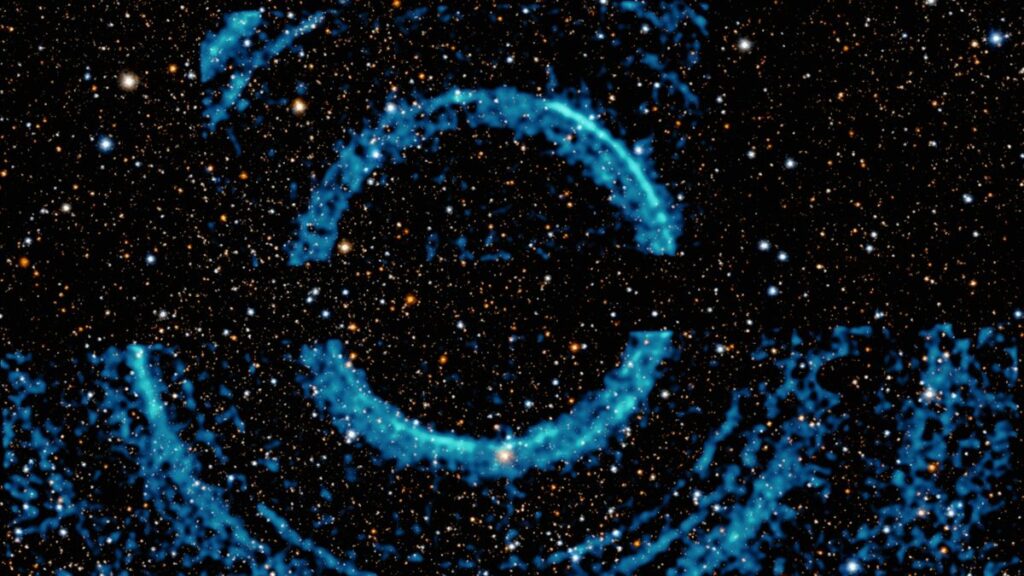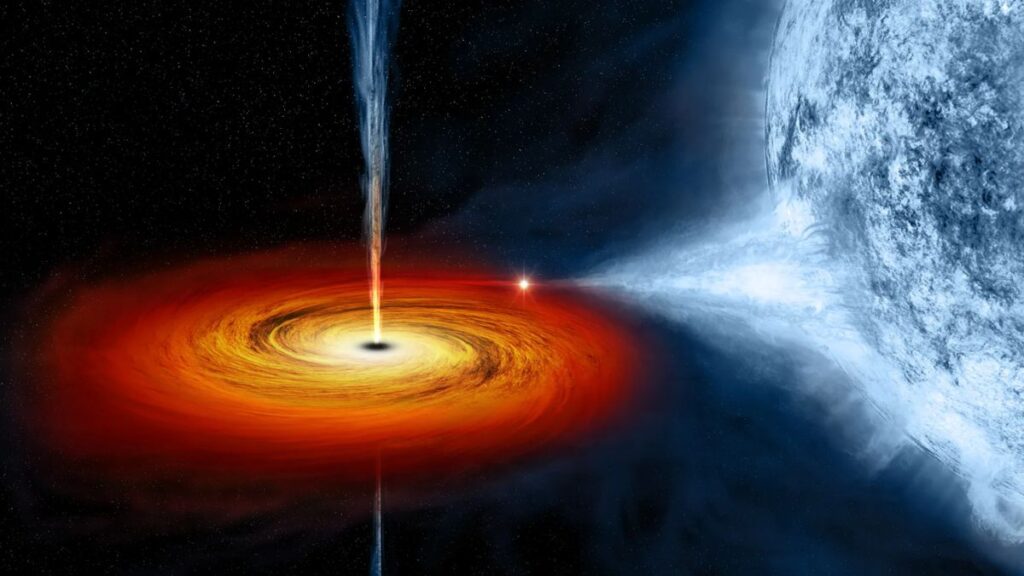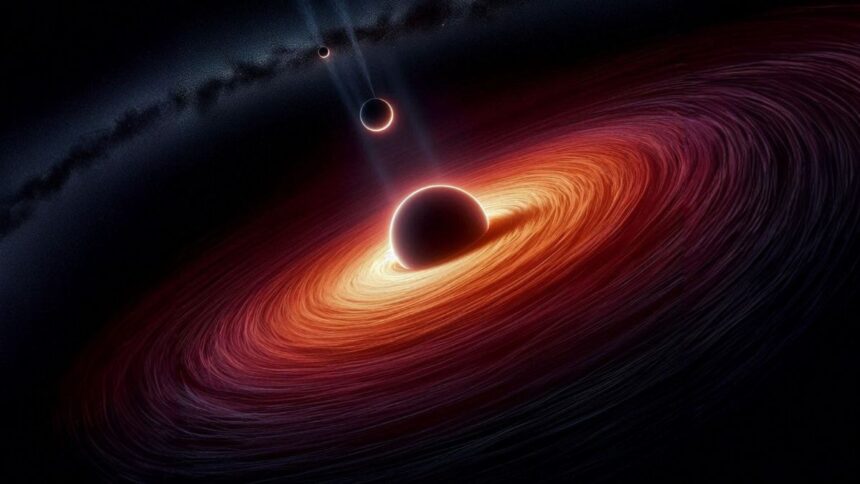Accidental fascinating discovery reveals the first triple black hole system that would challenge our understanding of black hole formation. Astronomers are shocked by this incredible discovery; this triple black hole system is unlike any other system. It is situated in our own Milky Way galaxy.
The system known as V404 Cygni includes a black hole with a high appetite for its near star. While the other star, which has more distance than the previous one, maintains orbit from that black hole. This rear alignment provides information about the black formation and challenges our conventional theories about the birth of deeds black holes.
What Is a Triple Black Hole System?
A triple black hole system consists of three cosmic bodies, in which at least one body is a black hole, and the other two can be stars or black holes. In this system, a single black hole sucks the material of nearby stars after the formation of an ‘x-ray binary system’. While the last means the third star orbits the binary x-ray binary system from a long distance.

We have conventional theories that state that black holes form after the death of massive stars in a supernova explosion. The immense gravitational collapse leads to eruptions and creates a space region where gravity is so strong that even light cannot escape. However, the newly discovered triple black hole system challenges this standard narrative with a big question.
Could Black Holes Be Born Quietly?
Assume a black hole formed by standard theory, then resulting in shockwaves that would likely have expelled the third star from the system, but that did not happen. So, the rising question is whether black holes can be born quietly. V404 Cygni system suggests a quiet process called “direct collapse”. If, in this system black hole formed in quiet a process, then it raises many questions about the true nature of blackhole formation.
Discovery of this system was a coincidence. Scientists examined the data and noticed a different alignment of stars hiding the third object. After the study, it turned into an “X-ray binary system” It was not a duo but a trio linked by gravitational forces.

V404 Cygni system is located 8000 light years away from Earth in the Milky Way. The surprising fact is that the third star is orbiting the pair at a distance 3500 times the distance between the Earth and the sun.
It was just luck that we found the V404 Cygni system. Kevin Burdge from MIT found it; he noticed unusual gravitational behaviours that hint at an additional star that orbits this “X-ray binary system”.
Does This System Challenge Existing Black Hole Theories?
We have some conventional theories that suggest black holes form from Snova explosions. They release energetic kicks that push away nearby stars; however, they remain in orbit and gravitationally bound, which leads to conventional theories about the formation of black holes.
Scientists are baffled by Natal’s kick; they have not answered why Natal’s kick didn’t occur here. A Natal kick happens when a newborn black hole receives momentum from a Supernova explosion. This energy disturbs the system and ejects loosely bound stars, but in this system, the bound star is still in orbit. Suggesting that there is no Natal kick place. This condition indicates that some black holes can form without energetic bursts.
Scientists estimate the age of the system, and they found it to be around 4 billion years old. It makes it one of our galaxy’s oldest known black hole systems. Determining the age of such systems is quite not possible, but in this case, scientists successfully estimated the age V404 Cygni system.




